ICHNOLOGY-the study of animal traces (tracks, burrows, etc.)
This
page was born 03/29/2022. Rickubis designed it. (such as it
is.) Last update: 06/12/2023
Images
and contents on this page copyright ©2001-2023 Richard M. Dashnau
Go to Ichnology page 2
Go to Ichnology page 3
Go to Ichnology page 4 (this has the most recent observations)
Go back to my home page, Welcome
to rickubis.com
Go
back to the RICKUBISCAM page.
----------------------------------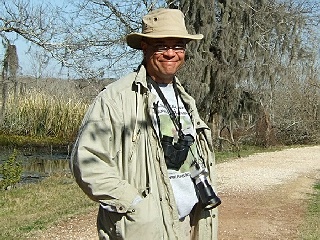
That's
me on the 40-Acre Lake Trail at Brazos Bend State Park (12/31/2007). I
was waiting for an otter to show up. It didn't.
Over the years that I've been keeping these pages,
making new observations and learning new things, I have met some interesting people. Two of them are Dr. Anthony Martin and Dr. Lisa Buckley. They study ichnology--
animal
traces. While the term is commonly used in relation to fossils
(such as dinosaur tracks), it also applies to living creatures as well
(sometimes called "neoichnology"
with "paleoichnology" for fossils). One major aspect of this study is that such traces can show animal behavior. For instance, a single footprint might not say much, except
what
kind of animal made it; but a series them might tell if the animal
was running, or jumping etc. There are three basic factors that
help to interpret traces: A) Substrate (the
material that holds the
trace) ; B) Anatomy (the part of the animal that affected the
substrate) and C) Behavior (what the animal was doing with the anatomy
that affected the
substrate). (see "The Three Pillars of
Ichnologic Wisdom" page 9 in Life Traces of the Georgia Coast by
Anthony J. Martin) I admit that I am not very good at finding and
interpreting
such traces. But, it is still fun to look and try to piece together the
mystery of what transpired at that spot before I got there. I
usually capture images of animals
activity. But every now and
then I've taken pictures of traces. I'll begin collecting them
here. I will eventually arrange them in chronogical order of some
kind. Many, many
thanks to Dr. Martin and Dr. Buckley for many
conversations via email and online; and for being supportive of my
amateurish efforts.
One
more thing: Although alligator burrows (or dens) and nests would be
considered ichnological traces. I've only got one example of an
alligator den on this page. I have
many observations of alligator dens, and have already gathered them onto other pages, starting here.
This page is arranged with the newest entries at the top.
09/14/2019 I
was back at Scobee field (where I filmed the wasps), and I looked down at a drying puddle that was on my way to the building where
the wasps live. There, I noticed an interesting
effect in the wet mud.
Taken out of context, a closeup of what I saw resembles the lunar surface-a meterite ravaged field of craters. But of course they were not craters caused by meteorites.
There is a surface effect caused by
raindrops in dirt that appear as small craters. In fact, there are
fossils of these events. But, I didn't think that raindrops caused
this, either. Some of the dimples
are too small to have been caused
by water droplets in that type of mud. So, what could have made the
holes? In the series of photos below, I expand the view of the
holes. The last image shows
the range of sizes and their amazing
quantity-hundreds? Thousands?
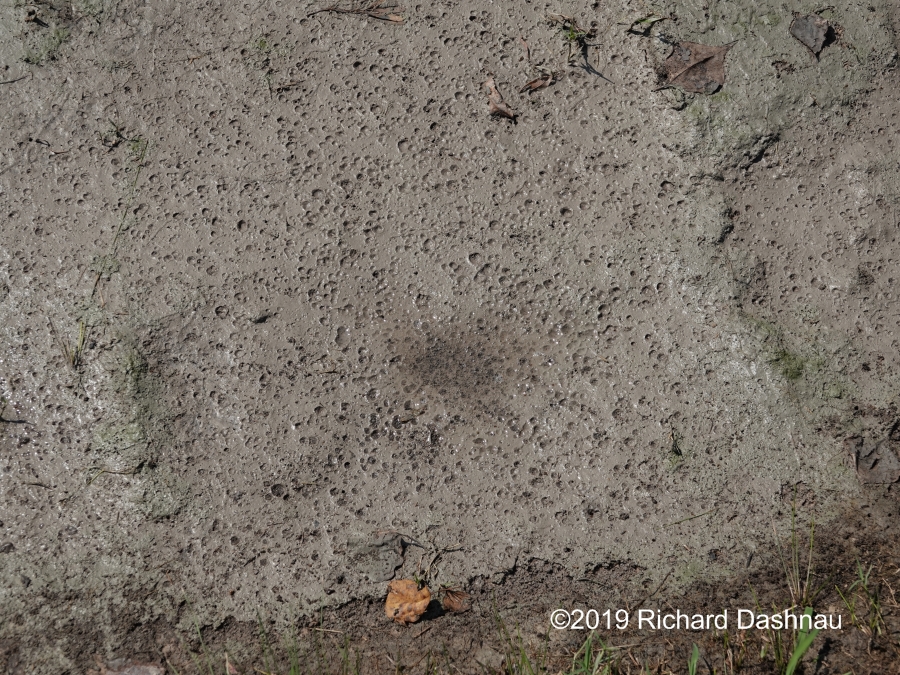
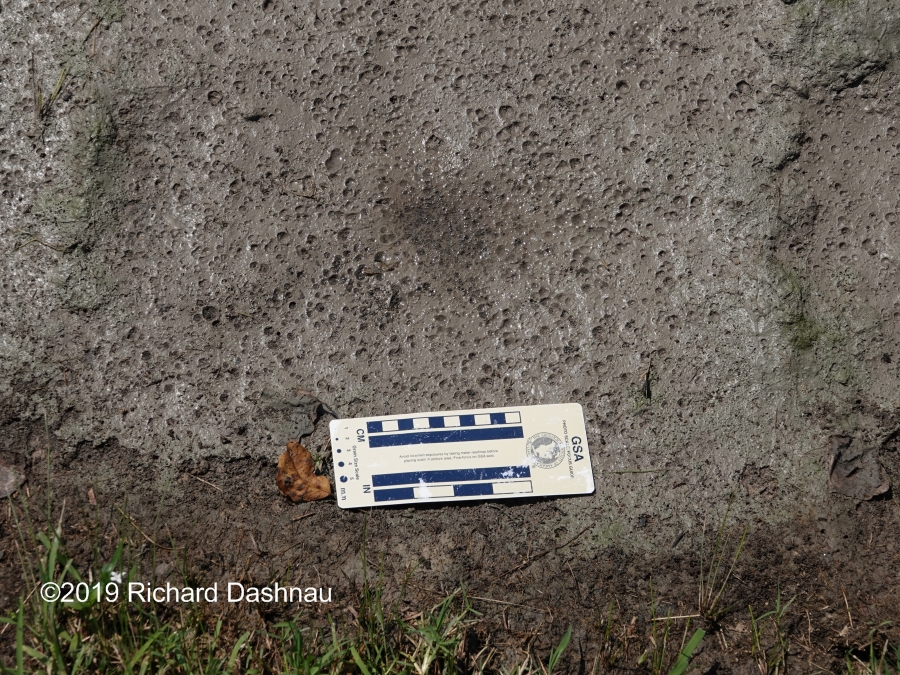
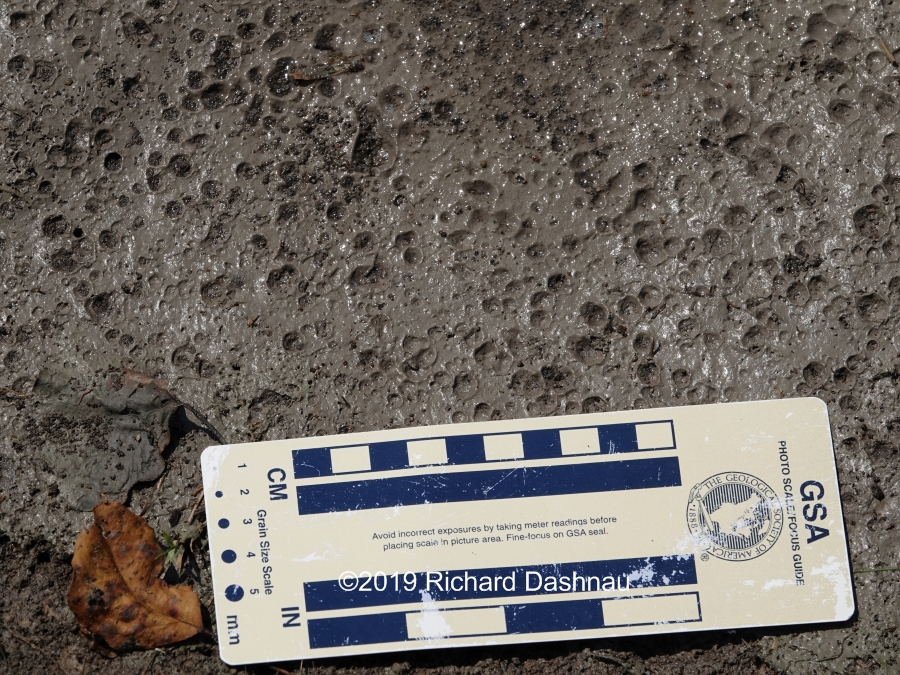
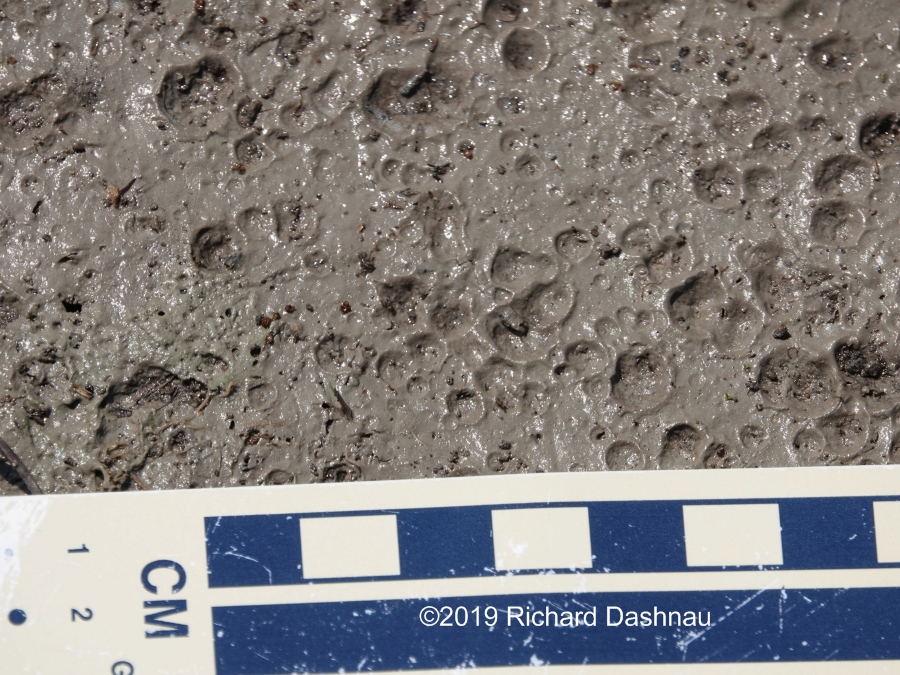
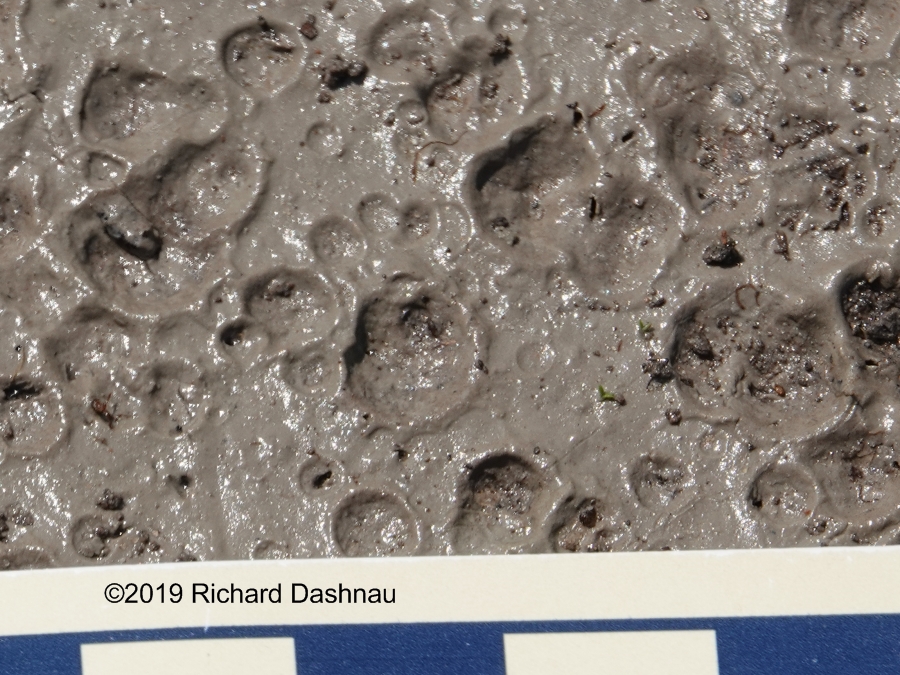
While
I was taking the pictures above, and examining the mud, I saw a winged
visitor that gave me a hint at what might have dimpled the mud. I
decided to perform a quick experiment. I considered
that I
would not be altering anything that was there, and that all the
elements I needed were already in place. I replenished the water
in the puddle.-but not very much. I retrieved about a half-gallon and
slowly poured it onto the edge of the depression so it would flow to
the lowest parts. I didn't want to wash away any of the markings.
This produced some wet spots, with just a fraction of an inch of
water
in a few places, and these immediately began to dry. But, it was
enough time. Within a few minutes, visitors arrived at the puddle.
My guess had been correct! I shot some photos and some
video clips as the area became busy. The images below are
frame grabs of my culprits. In fact that clip is a pretty good
demonstration of how the dimples were made.
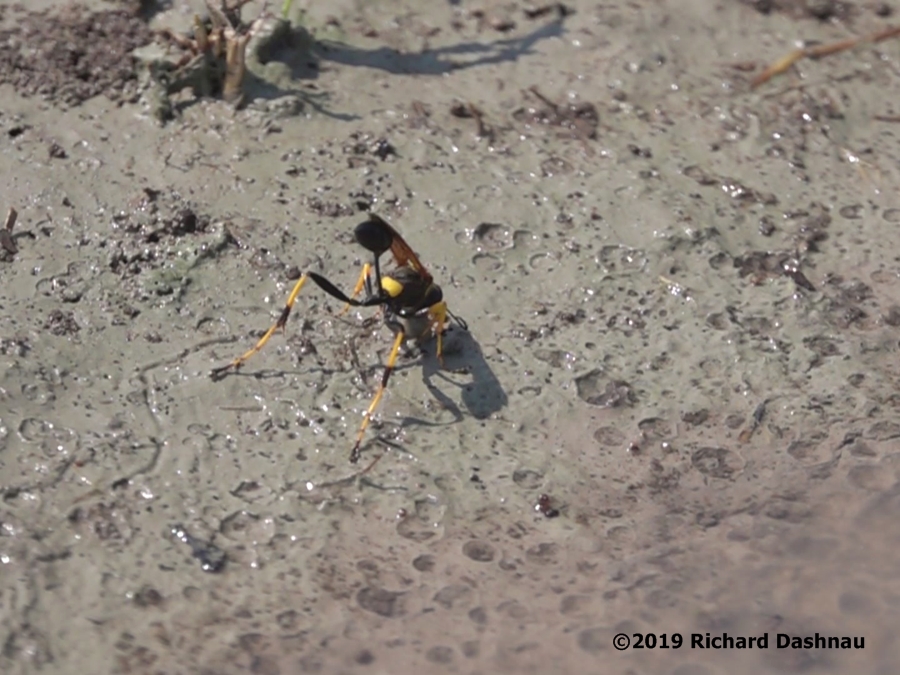
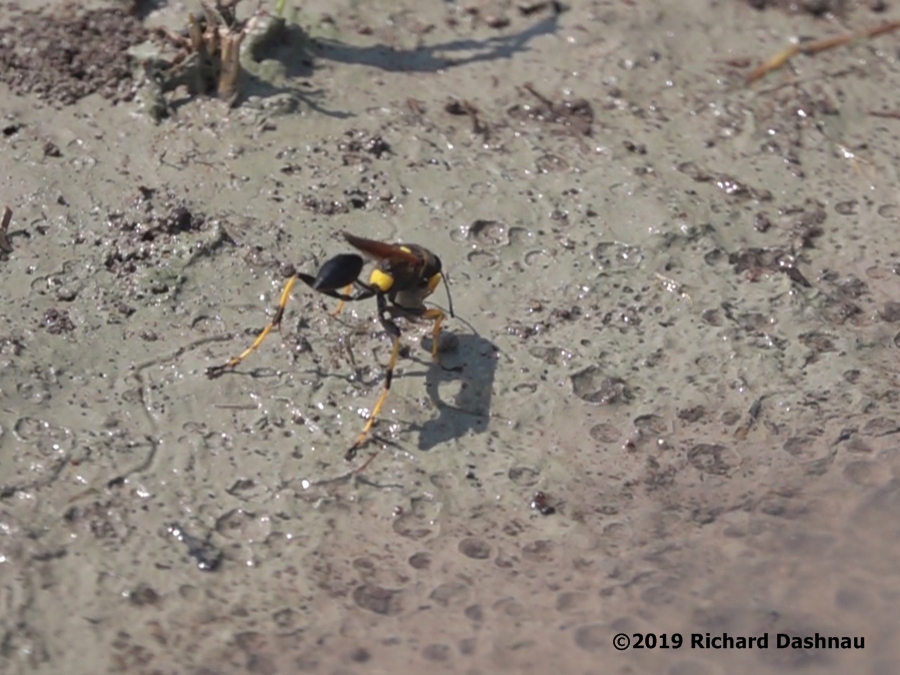
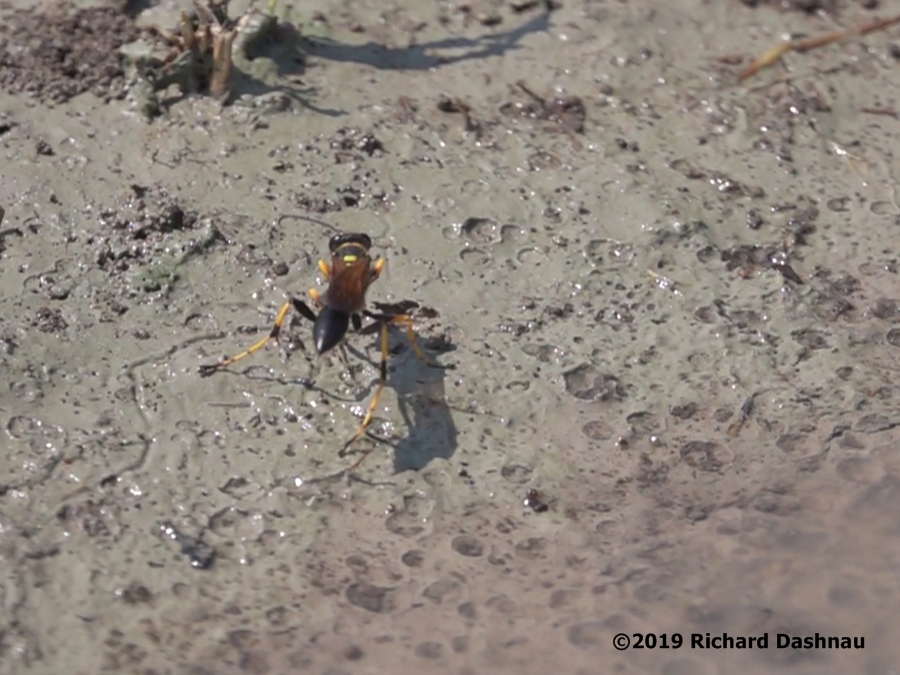
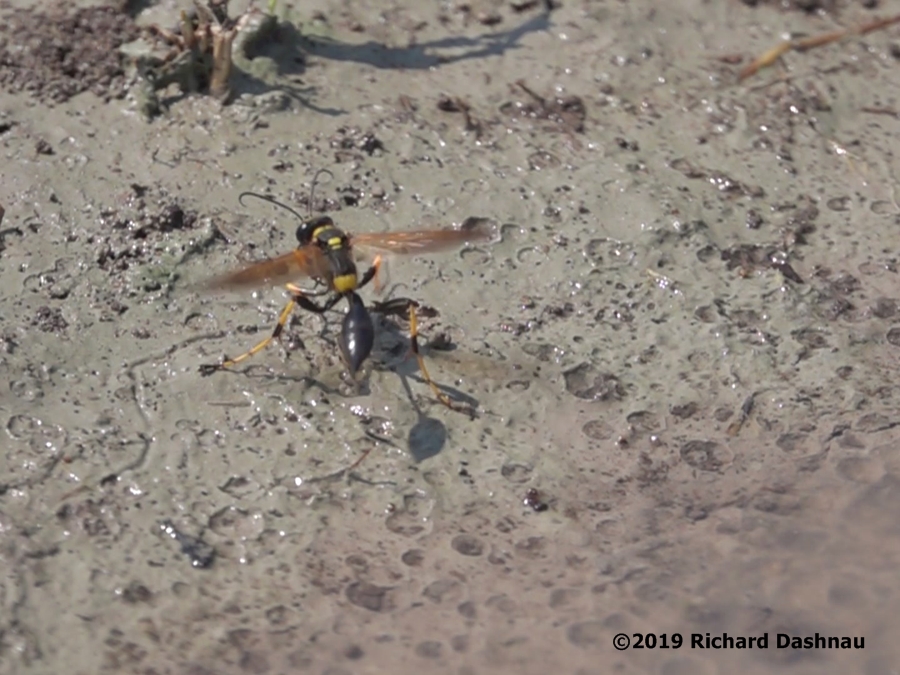
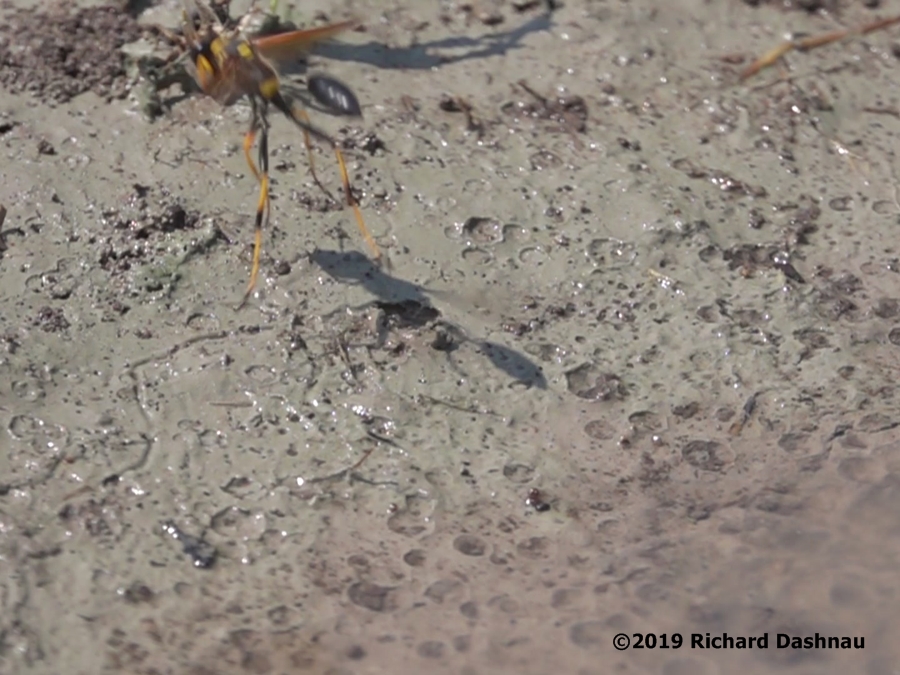
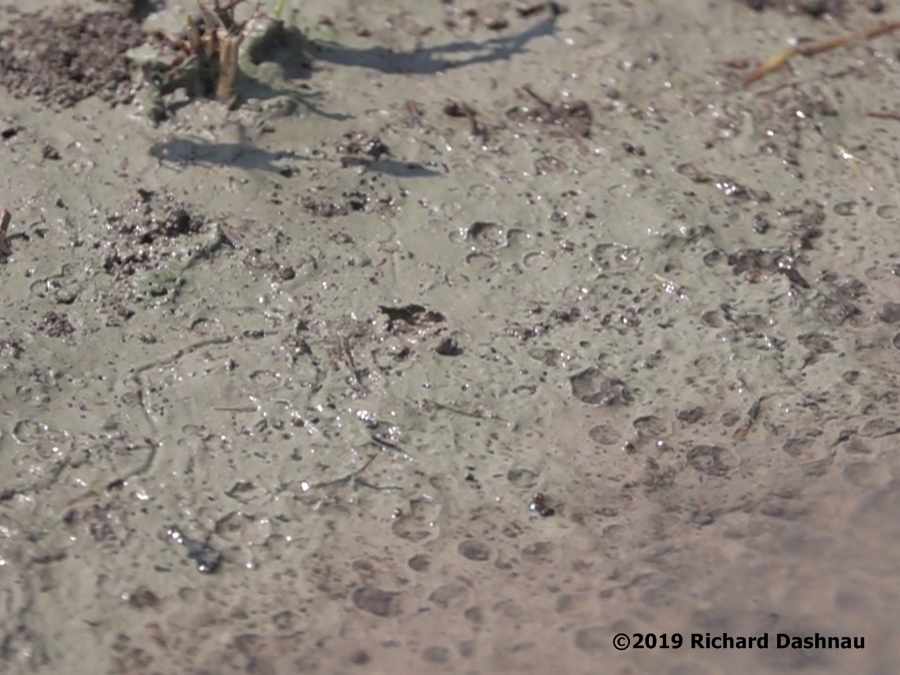
Yes, that is a Black and Yellow Mud Dauber (Sceliphron caemantarium). The last picture shows the hole it left in the mud. Notice that there's water right next to the
wasp. That's what I'd put in. Soon, more
Sceliphron arrived and began
digging. Other wasps also appeared, but they only seemed to drink at
the water's edge. Or-in the case of the polistes species that showed
up-ON the water. The wasps
would land on the surface of the water and
drift around a bit while drinking. I got many video clips, and I've edited some of them with some photos into this wasp digging video . By the way, all this was
happening about 30 paces from where I've filmed previous video clips of the various species of wasps interacting. The edited
video shows some closeup views of how the mud-daubers dig the mud,
and
make it into spherical packages to carry off. Quite by accident,
I've collected some interesting views of mud dauber behavior.
I have filmed Sceliphron building their nests (but not at this
park-the
nests are hidden
under the siding of the bathroom building.) I will have to see if
I can use that and fill in another section of their behavior!
This paragraph updated 2/12/2022--added new information about the "vibration" done by the digging wasps. In the current version (from 2019) of the edited video, I comment on the
vibration
of the wasps' bodies while they are digging. In the time since then,
I've wondered if that vibration was being done to soften the mud, by a
sort of "vibration liquifaction" effect. Just today, 02/12/22,
I found a
study that at least refers to this vibration as a method to modify the
viscosity of the mud. Study: "Investigating Physical and Mechanical
Properties of Nest Soils Used by Mud Dauber Wasps from a
Geotechnical
Engineering Perspective", by Joon S. Park, Noura S. Saleh, Hai Lin,
Hussein Alqrinawi & Nathan P. Lord Link [ https://www.nature.com/articles/s41598-022-06162-2 ]. Although I think
the effect is more like using vibrators while working concrete as described here, while forming the pellets,and while building the nest.
08/13/2019 As I was finishing some exercises at Memorial Park, I noticed something moving in the grass towards my
exercise circle. Since the path was covered with fine-grained
dirt, I saw an
interesting opportunity.
I retrieved my camera and took some pictures and some video.
Then, I was able to do an exercise in ichnology. Ichnology is
the study of animal traces. It is commonly used in
relation to
paleontology; so sometimes "neoichnology" is used to refer to traces
left by living (extant) animals, and "paleoichnology" for fossil
traces. Three elements can produce a trace: substrate (the
recording medium i.e. mud, sand, etc.), anatomy (physiological
structures), and behavior (what the animal did while leaving the
trace). I don't have a good eye for identifying a trace, but in
*this* instance
I could watch it happen. So, the 4 images below show
the tracks-of course, after the animal crossed. From left to
right, I enlarge the view. My camera tripod shows scale.
Its an oddly-assymetrical trail.
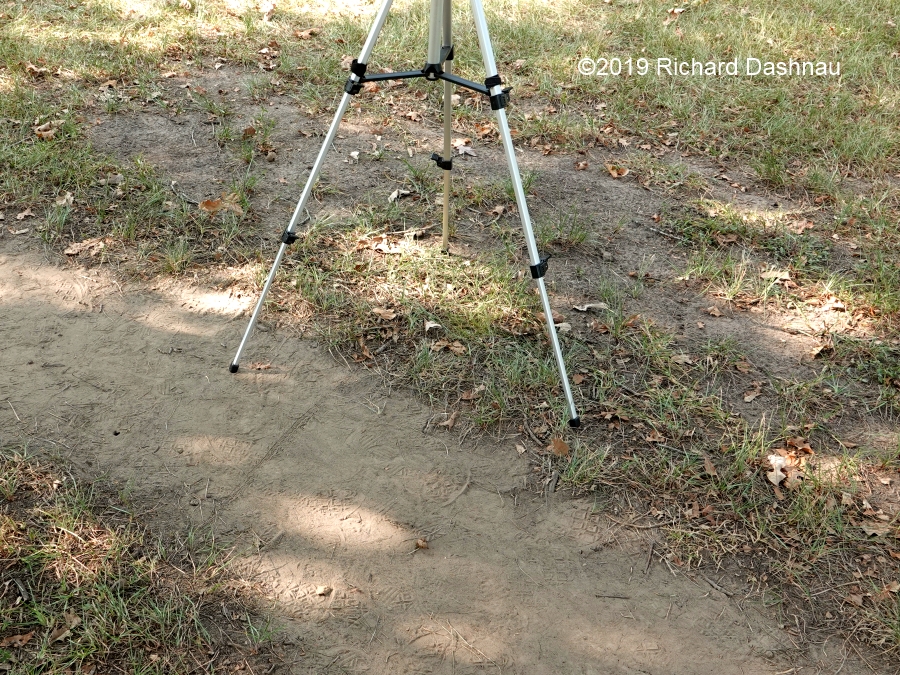
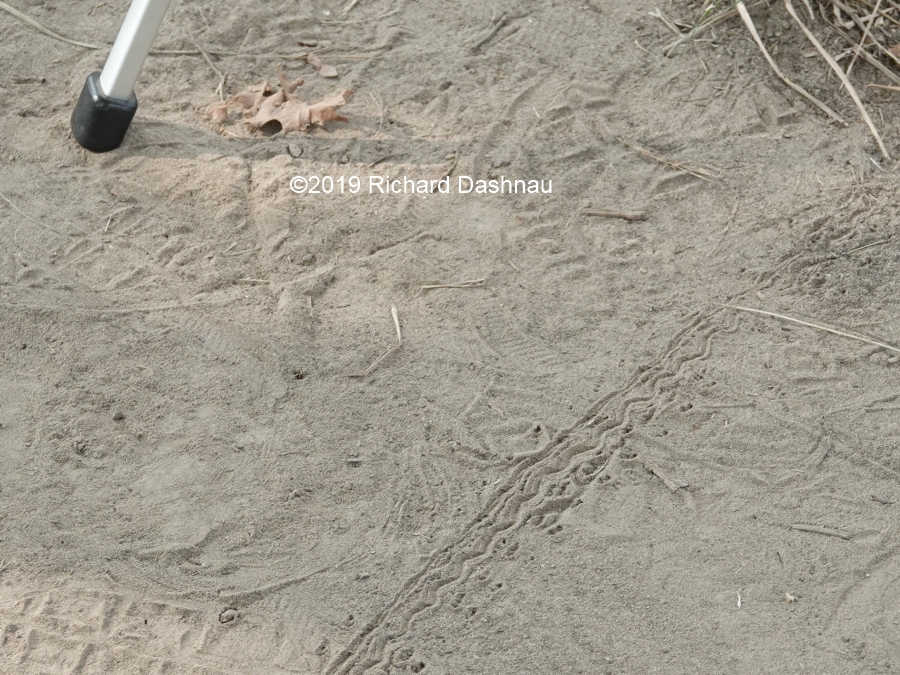
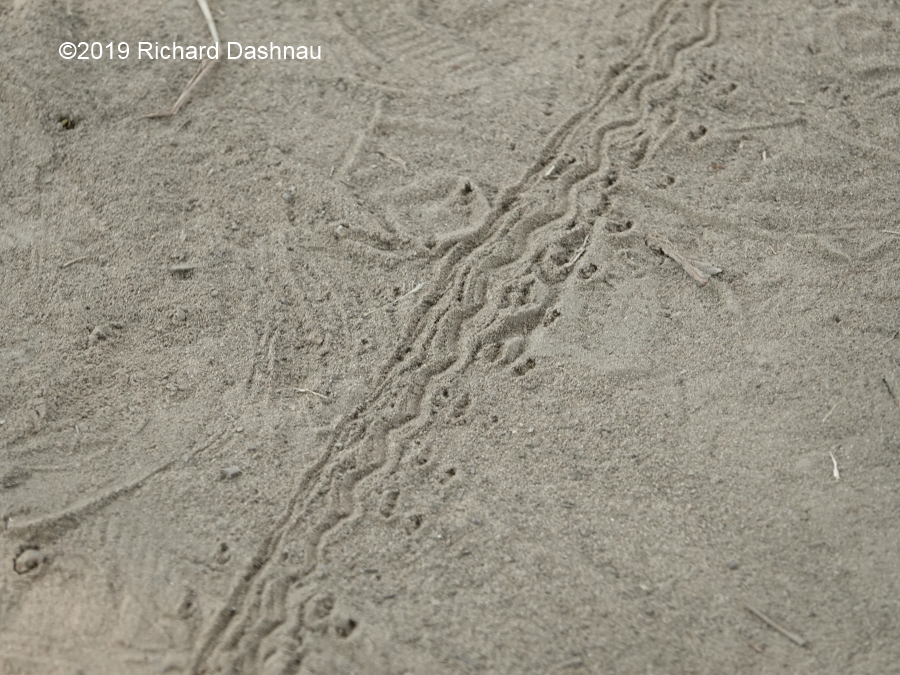
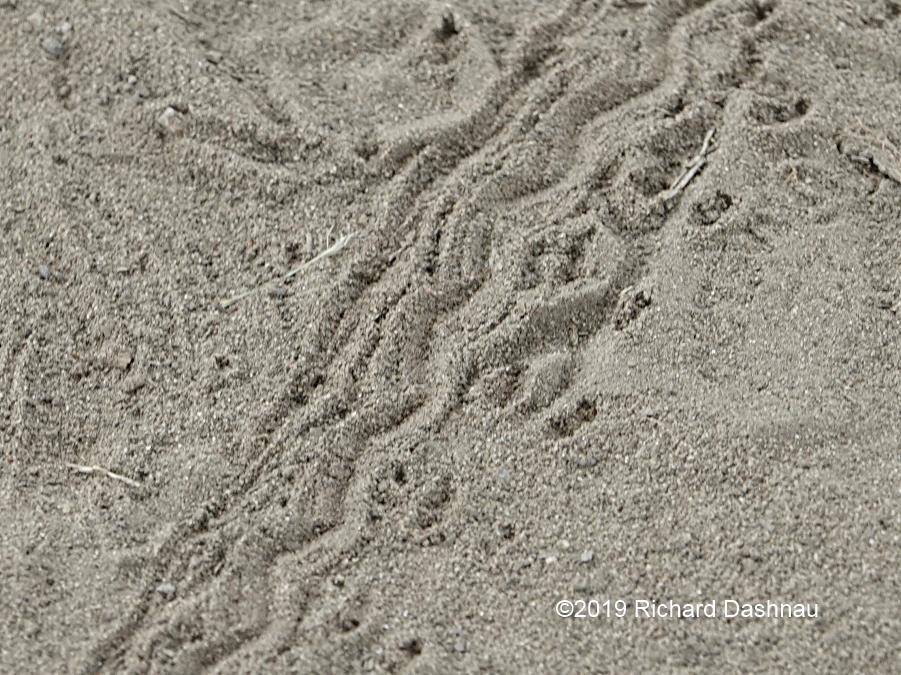
The four images below are from the video clip, and they show the track maker as it made the tracks. The
culprit was a larval cicada! It had come out of the ground and
was looking for something to climb
upon so that it could complete its
tranformation into an adult.
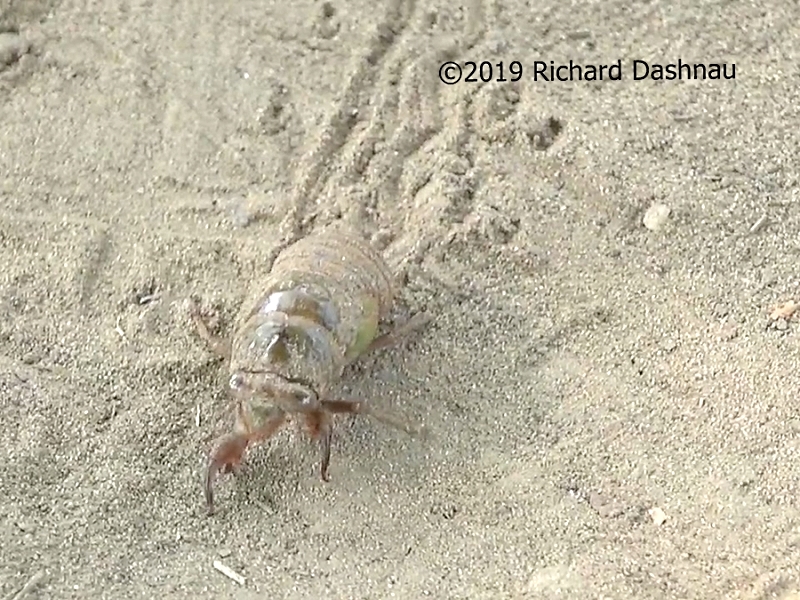
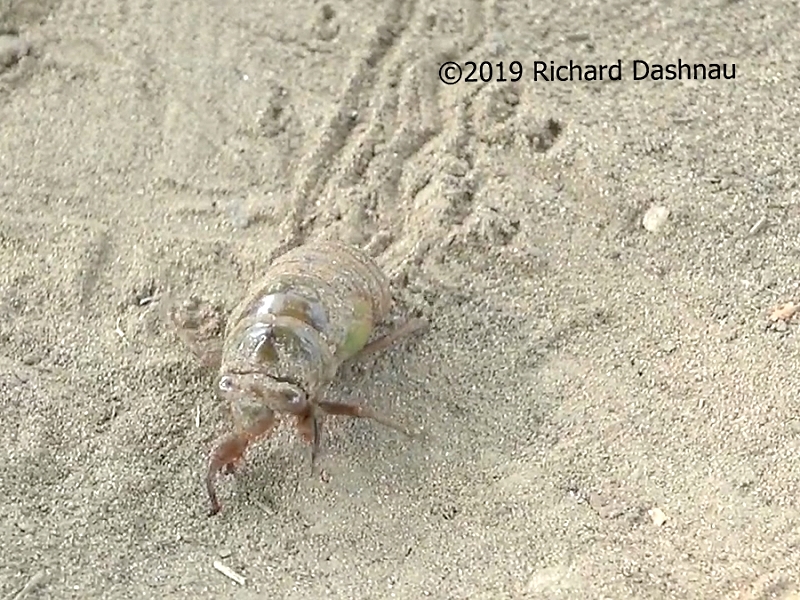
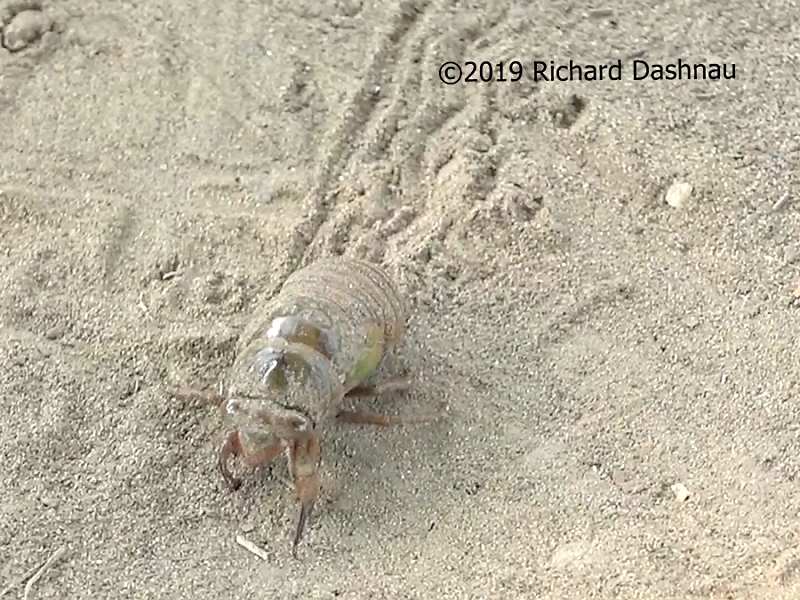
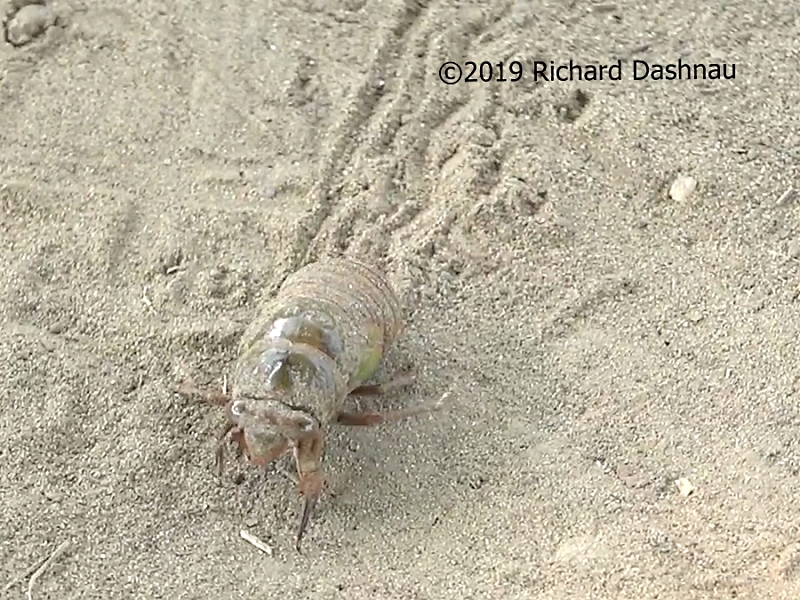
September 15, 2013 I
was at the South end of 40 Acre lake. Low water levels had uncovered
that end of the lake, leaving the lake bed exposed. I noticed two large
depressions
in the mud, and decided to go examine them. They were obviously traces left by some animal.
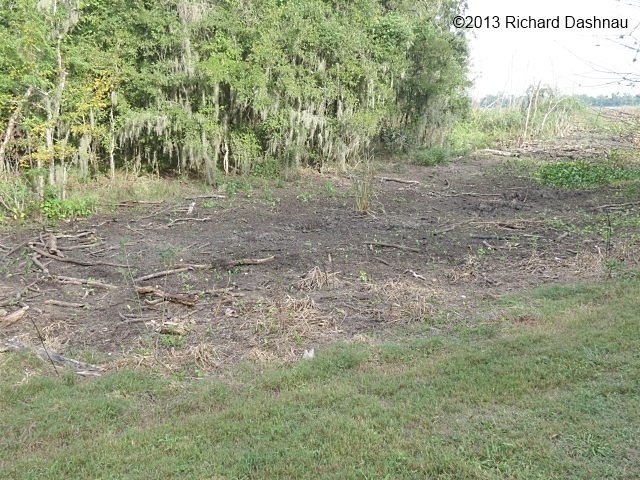
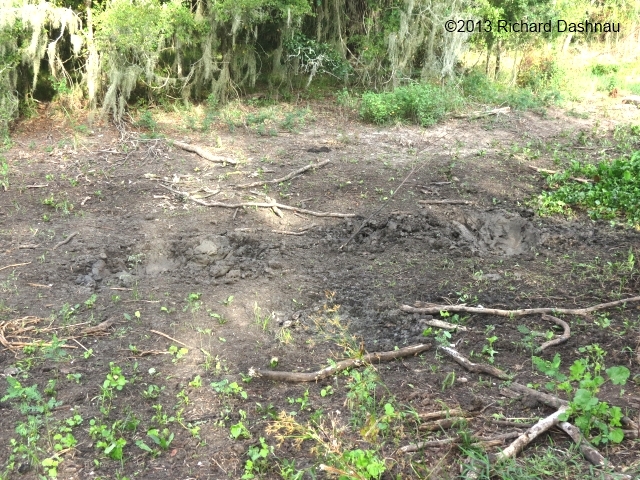
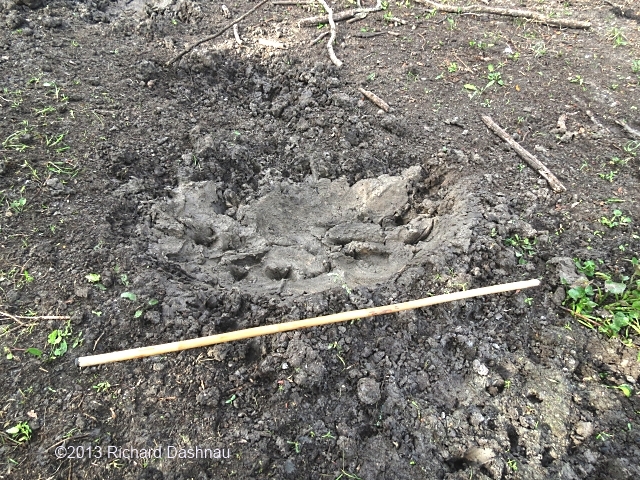
I
focused my attention on the larger depression. As shown by comparison
by my walking stick (which is 71 1/2 inches long), the hole is about 4
feet long.
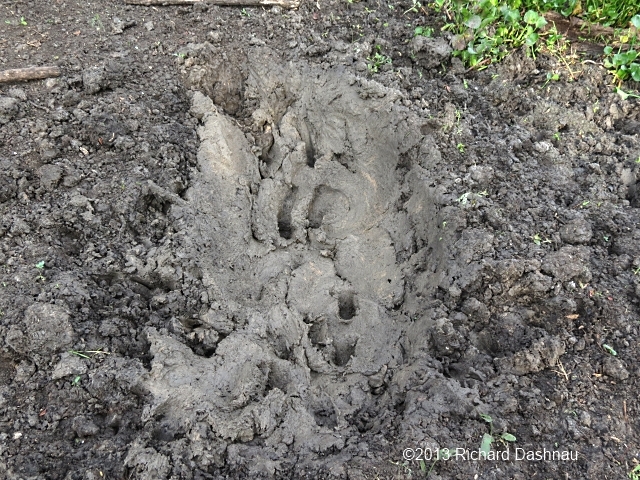
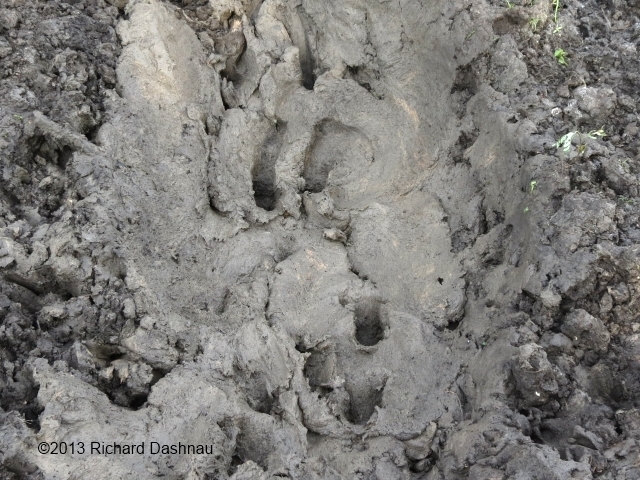
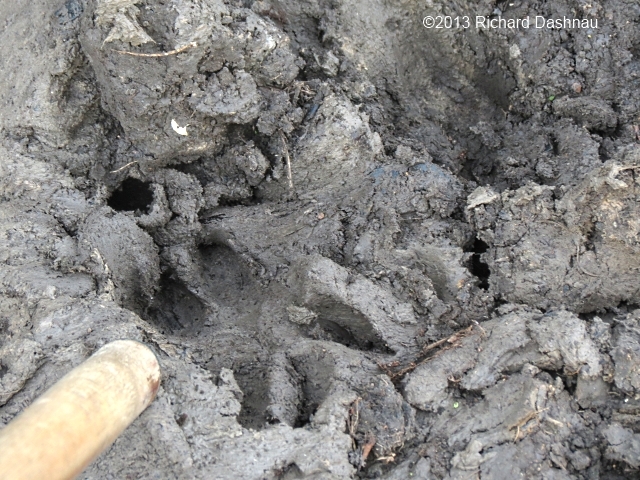
A number of marks showed in the mud. These appeared to be footprints, most likely from a feral hog.
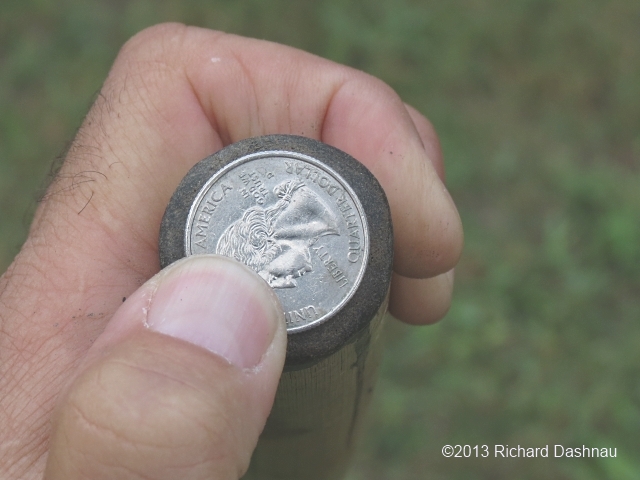
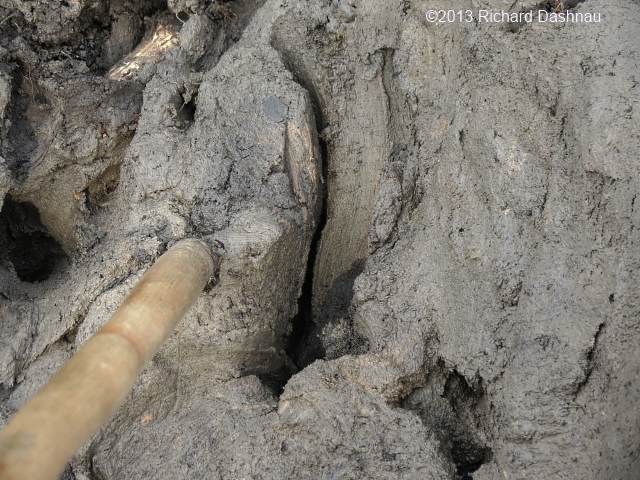
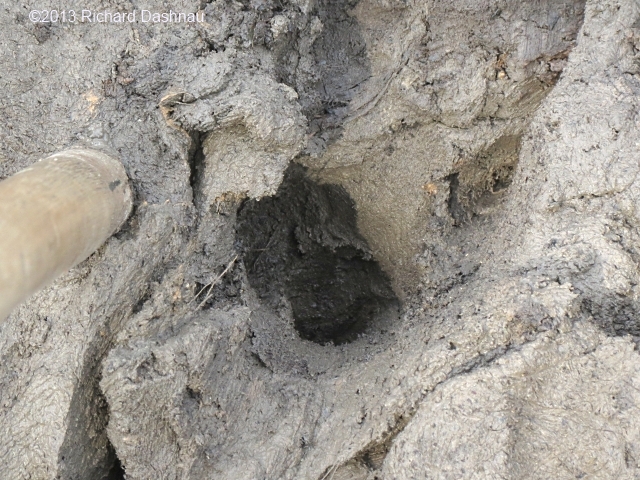
My walking stick is about 1 inch thick. The footprints, if that is what they are, are pretty big. There are some other
marks
that I couldn't identify. By comparison alligators have 5 toes on their
front feet (manus) and 4 toes on their back feet (pes).
Here's an example of my hand with the pes impression of a large alligator.
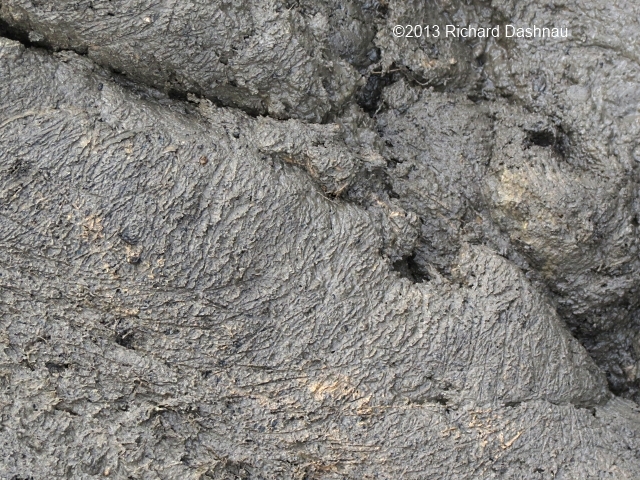
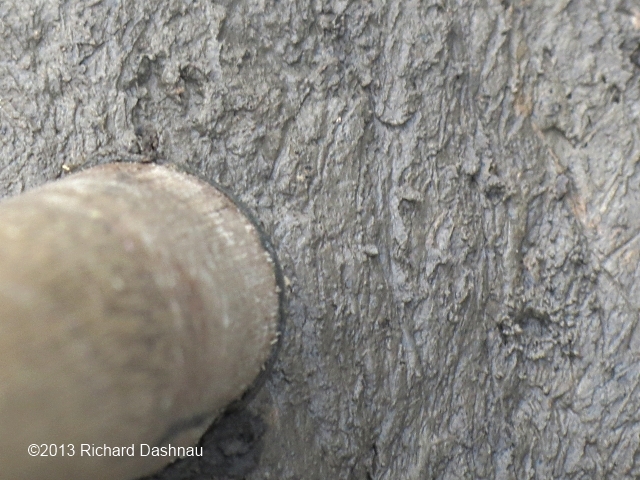
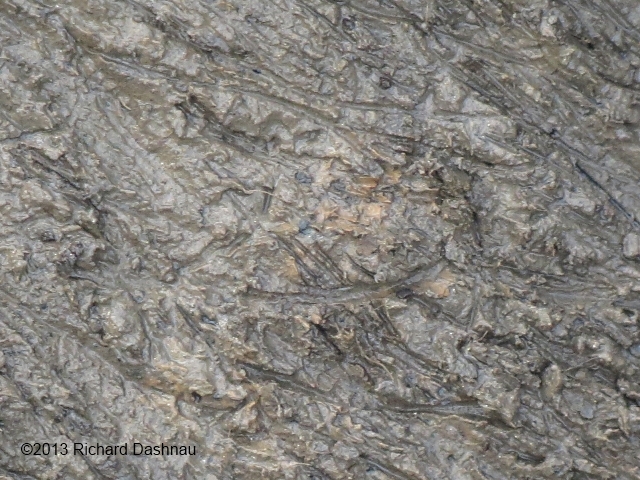
But
what I thought was the most interesting thing about these traces was
the numerous "scrapes" in the impression. I believe these are
impressions of the hog's fur!!
The
study of animal life traces is called "ichnology". That is, the
changes in the environment left by living animals. The three "pillars
of ichnology" (according to Anthony Martin in his book Life Traces
of the Georgia Coast) are:
1) Substrate -the material which has captured the life traces
2) Anatomy - the parts of the animal which have altered the substrate
3) Behavior - the actions done with the anatomy to leave marks on the subtrate
Ichnology can be studied in living organisms (neoichnology); or ancient organisms (paleoichnology).
On
01/04/2009, the water level in Hale lake had dropped enough to expose
this den near. As I show in the second picture below, the water level
was usually at least 8 ft higher, so the den was dug
in
deep water. This large alligator in front of the den looked like a
dragon in front of a cave. Many other pictures of alligator dens
and nests are on this page.
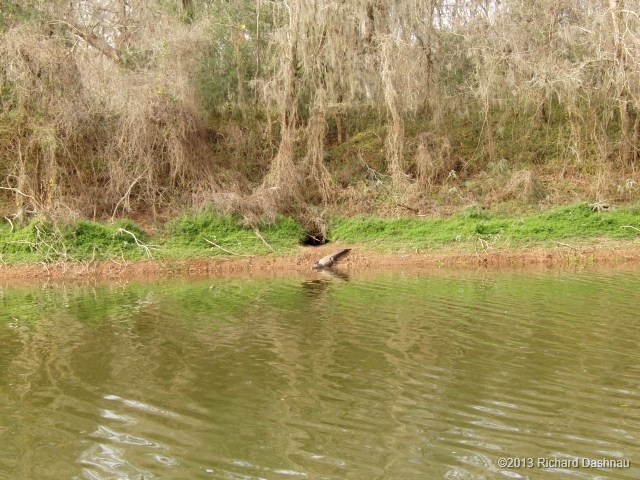 --
-- --
--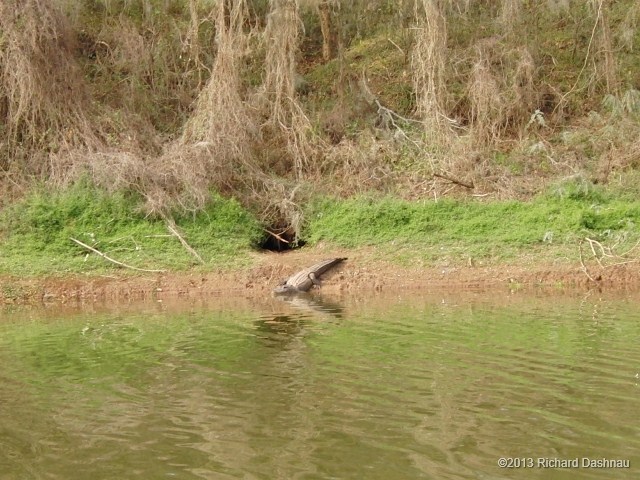 --
--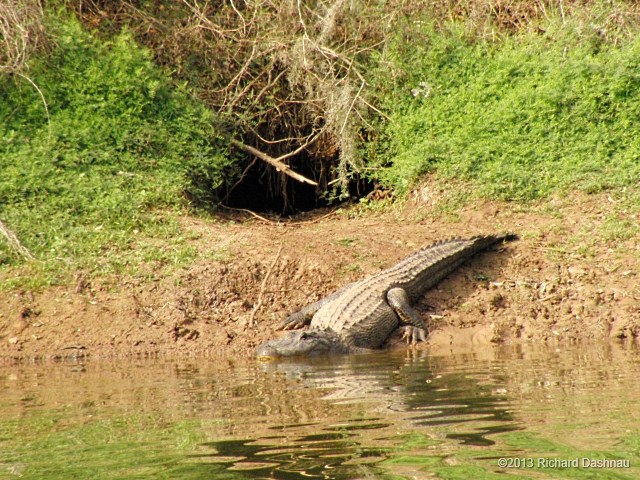
HALE
LAKE DEN WITH ALLIGATOR
NORMAL WATER LEVEL ABOVE DEN
SOMEWHAT CLOSER VIEW
LARGE DEN ENTRANCE
-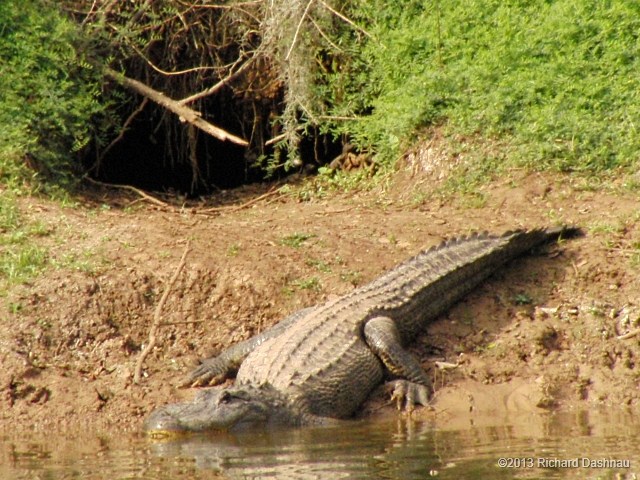
THIS
IS A LARGE ALLIGATOR
March
3, 2002 Back sometime in November
of 2001 (I think) we built a new bridge over a section of the Pilant Slough
trail at Brazos Bend Park. The main reason we built this bridge was because
there
was a path between two bodies of water that was being eroded away
by a large alligator passing back and forth between them. This
alligator had worn down the sides of the path at this point until there
was only about 3 feet of dry space to walk on. The bridge was put over
this area-and dug out underneath it-to allow the path to remain wide, and
to allow the alligator to pass under the path. Today, as I
was walking
the trail, I saw the footprints shown in the large shot
(footprints
with quarter). There was also an impressive drag path, with a
flattened area in the mud. The round object in the picture (to
the left
of the larger print) is a quarter. These were large
footprints.
Click here
to see a larger version of the picture. While returning later in
the afternoon, I took another shot of these prints (click on the
image
to see it larger):
-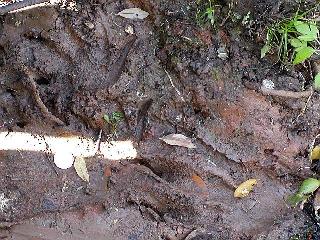 --
--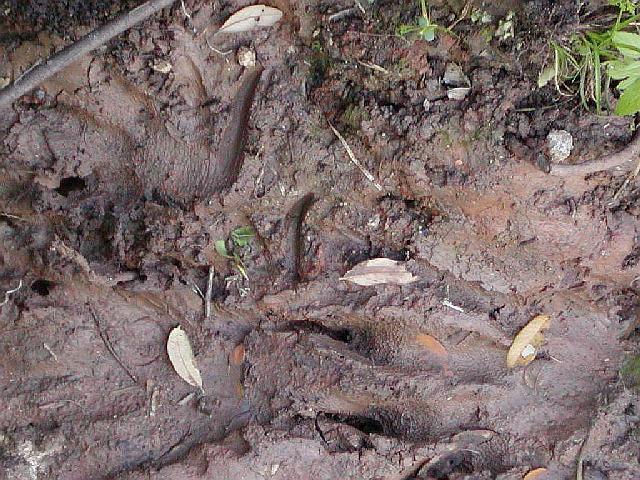 -
-
-
---Footprints with quarter------ -----Footprints
again.-------
1/29/2001
is when I first posted the article below. Although the substrate is
artificial (it was cable jacket) it has captured the traces of an
organism at work. These are from one of my earliest pages, and
more detailed
images can be found on the cookiecutter shark attack page.
Clicking on some of the images
in this page will enlarge that image. I kept them all at 320x240. Better images are on the other page.
The
year was 1991. The company I worked for was repairing hydrostreamers being
used in the Gulf of Mexico. The cables
are
quite long, and are towed behind seismic survey boats. We began seeing
a lot of cables coming in
with very odd damage to the plastic skin. This
skin, by the way, is very tough. It's hard to cut with a knife, and hard
to puncture. Since these cables are used in the oceans, we've seen many
kinds of damage. I've seen cables
obviously bitten into by sharks. I found
a shark's tooth at one time. Cables get torn on reefs and oil rigs. I still
have a tooth that probably belonged to a seal at one time, that I found
in another cable. The damage on this occasion,
however, was something
we'd never seen before. or, if we had, we'd assumed it was something else.
Although there was some variation in the marks, there were enough similarities
between them to show that they probably had
a common source. These two
images are of what I'd call the "classic" damage mode. That is, most of the bites looked like these.
-----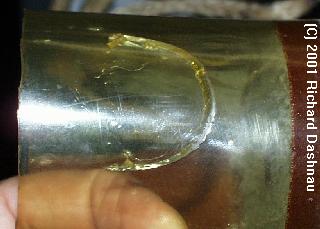 ---
---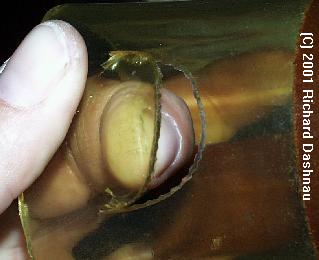 -
-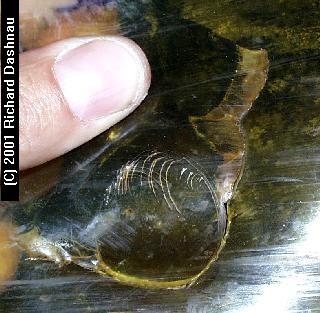 -
-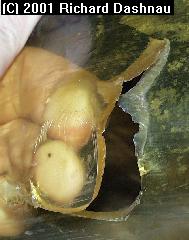 -
-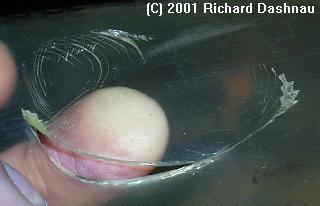
All images in this section were
taken 01/29/2001, but all of these are samples that I saved from back in
1991. These are bites from Cookiecutter Sharks (Isistius sp.), and the full story is on the cookiecutter shark page.
Go to Ichnology page 2
Go to Ichnology page 3
Go to Ichnology page 4 (this has the most recent observations)
Go back to my home page, Welcome
to rickubis.com
Go
back to the RICKUBISCAM page.
































 --
-- --
-- --
--



 ---
---
 -
- -
-